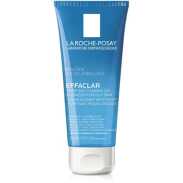Comparison between La Roche-Posay Toleriane Caring Wash vs. La Roche-Posay Effaclar Purifying Foaming Gel
- 15 components -
- 14 components -
Find out which product is better for your skin.
Ingredients in both products 4
Components only in La Roche-Posay Toleriane Caring Wash 11
Glycerin, Pentaerythrityl Tetraethylhexanoate, Propylene Glycol, Ammonium Polyacryloyldimethyl Taurate, Polysorbate-60 and 6 more. Show all.
Uniqueness: 73.3%
Components only in La Roche-Posay Effaclar Purifying Foaming Gel 10
Sodium Laureth Sulfate, PEG-8, Hexylene Glycol, PEG-120 Methyl Glucose Dioleate, Zinc PCA and 5 more. Show all.
Uniqueness: 71.4%
Face to Face
Components position by position
1
Water
1
Water
2
Glycerin
2
Sodium Laureth Sulfate
3
Pentaerythrityl Tetraethylhexanoate
3
PEG-8
4
Propylene Glycol
4
Coco-Betaine
5
Ammonium Polyacryloyldimethyl Taurate
5
Hexylene Glycol
6
Polysorbate-60
6
Sodium Chloride
7
Ceramide Np
7
PEG-120 Methyl Glucose Dioleate
8
Niacinamide
8
Zinc PCA
Show others
Positive Effects
Find out what good effects the product has
Both products provide the following effects: Antioxidant, Cleansing, Soothing, Lightening, Antiseptic
Effects unique for Toleriane Caring Wash:
UV Protection, Moisturizing, Acne fighting, Pore Shrinking, Softening, Anti-aging, Healing, Elasticity improvement, Regeneration, Hair conditioning, Hair structure improvement, Hair gloss, Hair protectionEffects unique for Effaclar Purifying Foaming Gel:
Lifting, Antifungal, Hair growth stimulating-- Show more --
ECO Metrics
Find out how eco-friendly the components are
Vegan
No
No
Cruelty free
No
No
Reef friendly
Yes
Yes
Ozone layer safe
Yes
Yes
Organic score
natural
5 out of 15
33%
chemical
9 out of 15
60%
natural
4 out of 14
29%
chemical
10 out of 14
71%
Concerns
Pay attention to this information
-- Extra information --
Components by Skin Type
Find out what components are good or bad for your skin type
Dry skin
Positive: 4Negative: 0
Glycerin#2Propylene Glycol#4Panthenol#13Tocopherol#15
Oily skin
Positive: 0Negative: 0
Sensitive skin
Positive: 0Negative: 0
Dry skin
Positive: 0Negative: 1
Sodium Laureth Sulfate#2
Oily skin
Positive: 0Negative: 0
Sensitive skin
Positive: 0Negative: 1
Citric Acid#10

